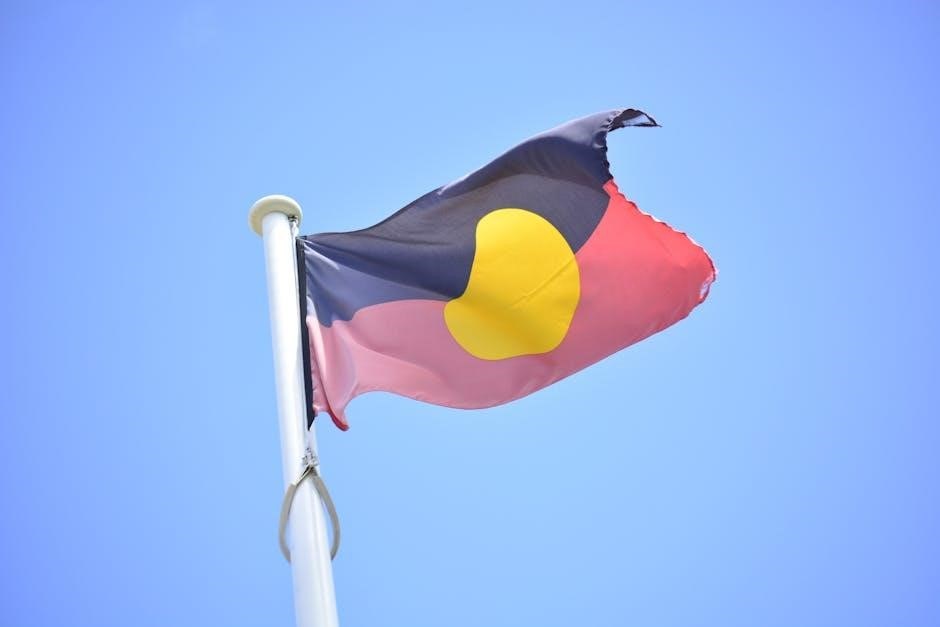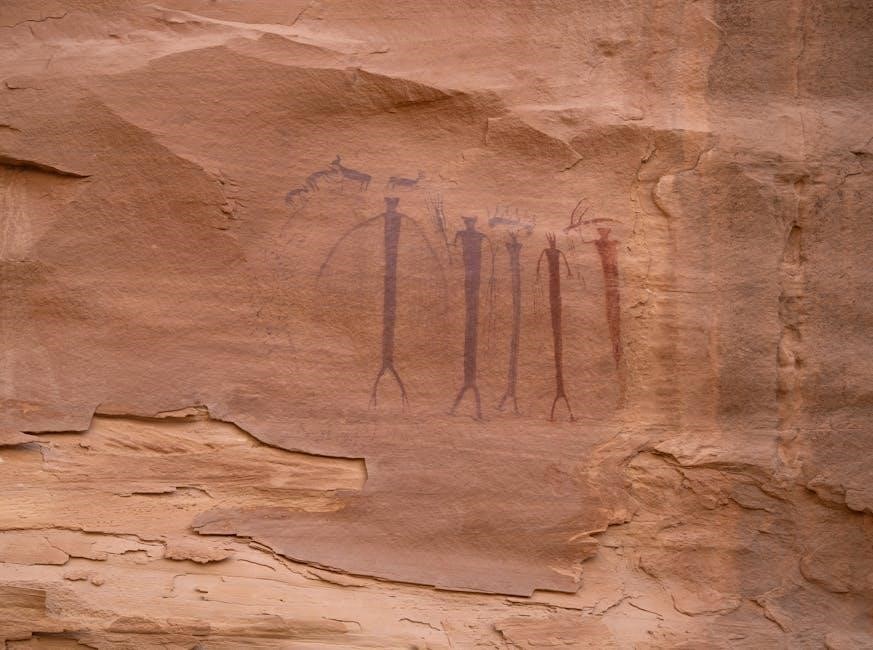An Indigenous Peoples History of the US provides a narrative centered on the story and experiences of Indigenous peoples, exploring their history and struggles in the United States naturally always.
Book Overview
An Indigenous Peoples History of the US is a book that offers a unique perspective on American history, focusing on the experiences and struggles of Indigenous peoples. The book, written by Roxanne Dunbar-Ortiz, provides a comprehensive narrative that explores the history of the United States from the perspective of Native Americans. It reveals how Native Americans actively resisted the expansion of the United States and how their struggles have been erased from traditional narratives of American history. The book is part of the ReVisioning American History series and includes bibliographical references and an index. It is a valuable resource for those interested in learning about the history of Indigenous peoples in the United States and their ongoing struggles for justice and recognition. The book has been widely praised for its insightful and thought-provoking analysis of American history.
Author Background
Roxanne Dunbar-Ortiz is a renowned historian and activist who has written extensively on the history and experiences of Indigenous peoples in the United States. She has a strong background in Native American Studies and has been involved in various social and political movements throughout her career. As a historian, Dunbar-Ortiz has conducted extensive research on the history of Indigenous peoples and has published numerous articles and books on the subject. Her work has been widely praised for its insightful and thought-provoking analysis of American history and its impact on Indigenous communities. Dunbar-Ortiz’s expertise and passion for Native American Studies have made her a leading voice in the field, and her book An Indigenous Peoples History of the US is a testament to her dedication to telling the stories of Indigenous peoples. Her writing is engaging and accessible to a wide range of readers.

Historical Context
Colonization and settlement of Indigenous lands shaped the United States historical context naturally and forever changing lives always and completely every day.
Colonization and Settlement
The colonization and settlement of Indigenous lands is a crucial aspect of the history of the United States, with the arrival of European settlers leading to the displacement and marginalization of Native American communities. The expansion of the United States was often achieved through violent means, with the forced relocation of Indigenous peoples and the destruction of their cultures and ways of life. This period of colonization had a profound impact on the lives of Indigenous peoples, leading to significant losses of land, culture, and identity. The legacy of colonization continues to be felt today, with many Indigenous communities still struggling to preserve their cultures and assert their rights. The history of colonization and settlement is complex and multifaceted, involving the interactions of various European powers and Native American tribes. Overall, the colonization and settlement of Indigenous lands has had a lasting impact on the history of the United States.
Native American Resistance
Native American resistance to colonization and settlement has been a persistent theme throughout the history of the United States. Indigenous peoples have consistently fought against the expansion of the United States, using various forms of resistance to protect their lands and cultures. This resistance has taken many forms, including armed conflict, diplomatic negotiations, and cultural preservation. Many Native American leaders have played important roles in resisting colonization, using their knowledge and skills to mobilize their communities and challenge the authority of European-American settlers. The history of Native American resistance is complex and multifaceted, involving the interactions of various Native American tribes and European powers. Overall, the story of Native American resistance is one of courage and resilience, as Indigenous peoples have continued to fight for their rights and freedoms in the face of overwhelming odds and challenges. Native American resistance continues today.

Book Adaptations

Acclaimed historian Roxanne Dunbar-Ortizs book has been adapted for young readers naturally and effectively always online now.
Young Readers Edition
The Young Readers Edition of An Indigenous Peoples History of the US is an adaptation of the original book, written by Roxanne Dunbar-Ortiz and adapted by Debbie Reese and Jean Mendoza. This edition is designed for younger audiences, making the information more accessible and easier to understand. The book provides a comprehensive history of the United States from the perspective of Indigenous peoples, covering topics such as colonization, resistance, and activism. The adaptation process involved simplifying the language and content while maintaining the core message and historical accuracy. The result is a valuable resource for young readers to learn about the complex and often overlooked history of Indigenous peoples in the US. The book has received positive reviews for its engaging narrative and informative content, making it an excellent addition to any school or personal library.
Scholarship and Reviews
An Indigenous Peoples History of the US has received widespread critical acclaim and scholarly recognition. The book has been cited by numerous scholars and reviewers, including VEV TILLER, who has cited it 103 times. Roxanne Dunbar-Ortiz’s work has been praised for its meticulous research and comprehensive narrative. Reviewers have noted the book’s ability to condense complex historical information into an engaging and accessible format. The book has also been reviewed by Jen Forbus for Shelf Awareness, who praised its informative content and engaging narrative. The scholarly community has recognized the book’s significance, with many considering it a valuable contribution to the field of Native American Studies. The book’s impact on the field is evident in its widespread citation and use in academic and educational settings. The reviews and scholarship surrounding the book demonstrate its importance and relevance.

Book Details
The book has 314 pages and includes bibliographical references and an index naturally always in the United States history books section online.
Publication Information
The publication information for An Indigenous Peoples History of the US is available online, including the publisher and date of publication.
The book is part of the ReVisioning American history series and has been well-received by scholars and readers alike, with many praising its unique perspective and thorough research.
The publication details can be found on various online platforms, including Amazon and other bookstores, where readers can also find reviews and ratings from other readers.
The book’s publication date is listed as 2014, and it has been widely acclaimed for its insightful and thought-provoking analysis of the history of Indigenous peoples in the United States.
The publication information also includes details about the book’s format, including the number of pages and the type of binding, which can be useful for readers who are interested in purchasing a copy.
Overall, the publication information for An Indigenous Peoples History of the US provides a wealth of information for readers who are interested in learning more about this important and timely book.
Page Count
The page count for An Indigenous Peoples History of the US is listed as 296 pages, according to online sources.
This includes the main text, as well as bibliographical references and an index, which can be useful for readers who want to explore the topic further.
The page count may vary depending on the edition of the book, but 296 pages is the commonly cited length for the standard edition.
The book’s page count is a testament to the author’s thorough research and detailed analysis of the history of Indigenous peoples in the United States.
The page count also includes 58 pages of reviewed content and 240-279 pages of bibliographical references, making it a comprehensive and well-researched volume.
Overall, the page count for An Indigenous Peoples History of the US reflects the book’s in-depth examination of a complex and important topic.
Concluding thoughts on the book are that it provides valuable historical context naturally and effectively always online now.
Importance of the Book
The book is important because it challenges traditional narratives of American history by centering the experiences of Indigenous peoples.
It provides a comprehensive and accurate account of the history of the United States from the perspective of Native Americans, which is essential for understanding the complexities of the country’s past and present.
The book’s importance lies in its ability to educate readers about the struggles and contributions of Indigenous peoples, promoting a more nuanced and inclusive understanding of American history.
By reading this book, readers can gain a deeper understanding of the historical and ongoing impacts of colonization and settlement on Indigenous communities.
Overall, the book is a valuable resource for anyone seeking to learn about the complex and often overlooked history of Indigenous peoples in the United States.
Recommendation
The book An Indigenous Peoples History of the US is highly recommended for anyone interested in learning about the true history of the United States.
It is a must-read for students, educators, and historians who want to gain a deeper understanding of the complex and often overlooked experiences of Indigenous peoples.
The book is also recommended for general readers who are looking for a comprehensive and engaging account of American history from a unique perspective.
With its well-researched and accessible writing style, the book is an excellent resource for anyone seeking to expand their knowledge of Indigenous history and culture.
Overall, the book is a valuable and thought-provoking read that can help to promote greater understanding and appreciation of Indigenous peoples and their experiences in the United States, making it a highly recommended read for all audiences always.